Search Results for Tag: Arctic Institute
Ex UN-climate chief speaks out on Arctic drilling
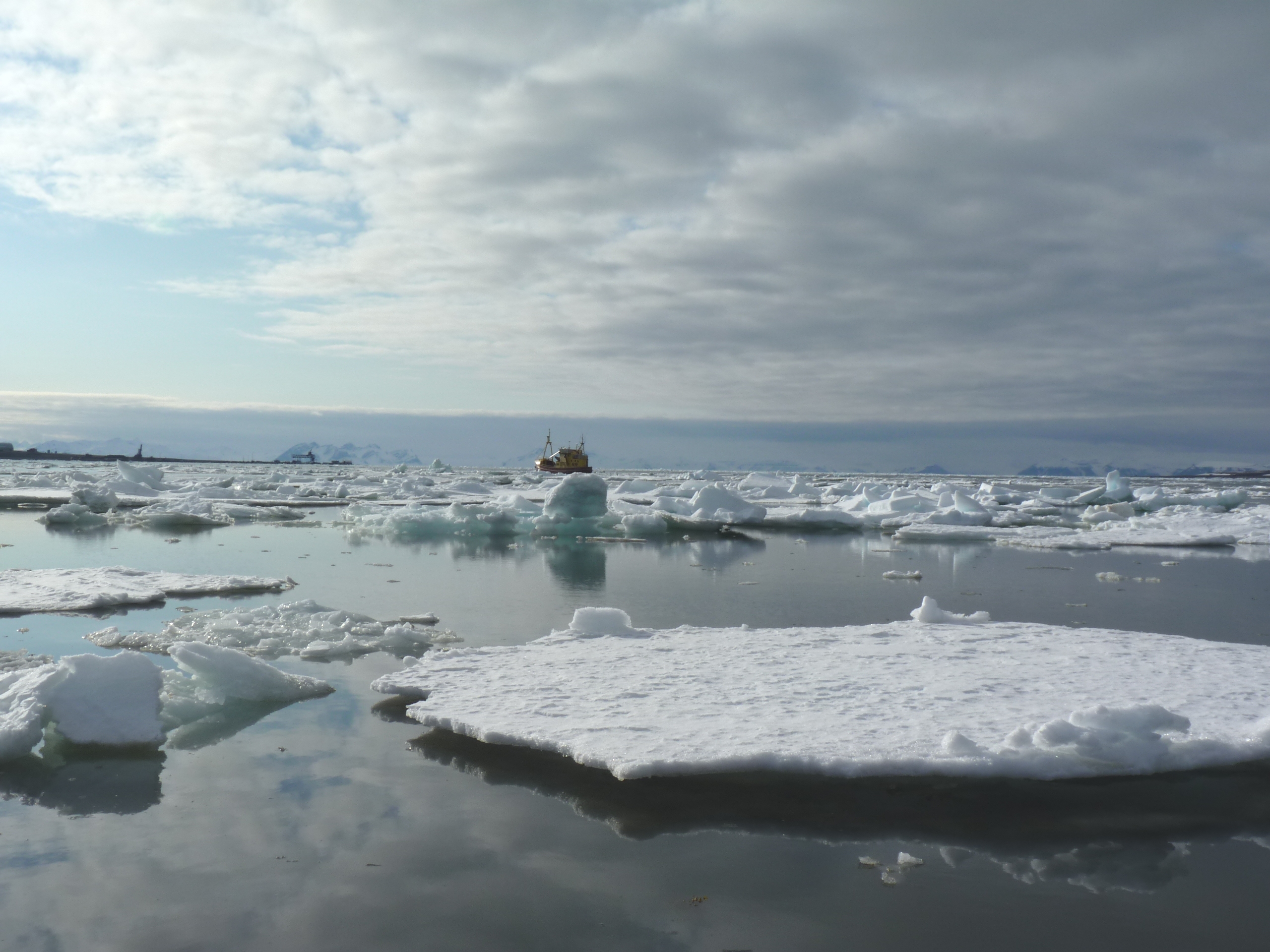
The Arctic:Physically more accessible – ethically a no-drilling zone (Photo: I Quaile)
One good thing about people no longer being in office is they are freer to come out with their own opinions. Former Executive Secretary of the UN climate secretariat UNFCCC Christina Figueres told Alister Doyle from Reuters this week that drilling in the Arctic was not economical and that warming was a threat to the environmentally fragile region. (Many thanks to the Arctic Institute for flagging that as top story in The Arctic This Week)
Passion versus diplomacy
I interviewed Ms Figueres several times when she was head of the UN climate secretariat here in Bonn. I always had the feeling she was passionate about climate protection and often wondered, as I did with her predecessor Yvo de Boer, whether they did not feel frustrated at the slow pace of climate action and the need to respond diplomatically and tread carefully on the minefield that is global geopolitics. With Yvo de Boer, that was certainly the case.
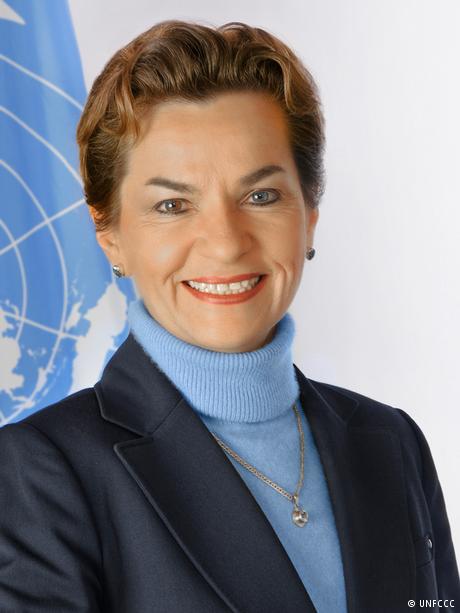
Christiana Figueres while still UN climate chief in Bonn
Back in 2014, ahead of the UN summit on climate organized by Ban-Ki-Moon, Christina Figueres told me in an interview that that mega-meeting was “an opportunity to show, to shine, and to start a race to the top, for everyone to realize that climate is not a one-sector or one company or one country issue, but an every man, every sector, every country issue. That is why it is such a broad invitation to all sectors, all countries, to come forward.”
Competition to halt climate change?
Wouldn’t it be fantastic to see countries racing to be the real climate champions? I would love to be able to say that has actually happened, but based on our global emissions to date and the failure of the latest working meeting in Bonn to make real progress in preparing this year’s climate conference in Poland at the end of this year, I do not have the feeling that there is a “race to the top” in cutting emissions and halting global warming.
The Trump factor
Clearly, one major factor in all this is the election of Donald Trump as US President. At that time, the UN climate chief told me “the second term of President Obama has seen an accelerated and upscaled engagement on climate change in particular. With the latest move of the Obama administration to ask EPA to come forward with regulations on power plants. That is probably the most ambitious action the US government has taken on climate change”.
What a disappointment to see the climate-sceptical US administration backpedaling on all of that and opting out of the Paris Agreement.
No action without catastrophe?
Figueres comes from Costa Rica, a country that she says is a model when it comes to climate action:
“Costa Rica has had a carbon tax for over 20 years, it has internalized the cost of this, and so is one of the countries to which many countries are looking a) for the carbon pricing model we have, also for the system we have of environmental payment for services, which we pioneered in Costa Rica and which is being used in other countries. It’s a country that doesn’t mind experimenting, is very risk-friendly and has actually benefitted from a these forward-leaning policies particularly with respect to the environment and holds a high repute amongst other countries.”
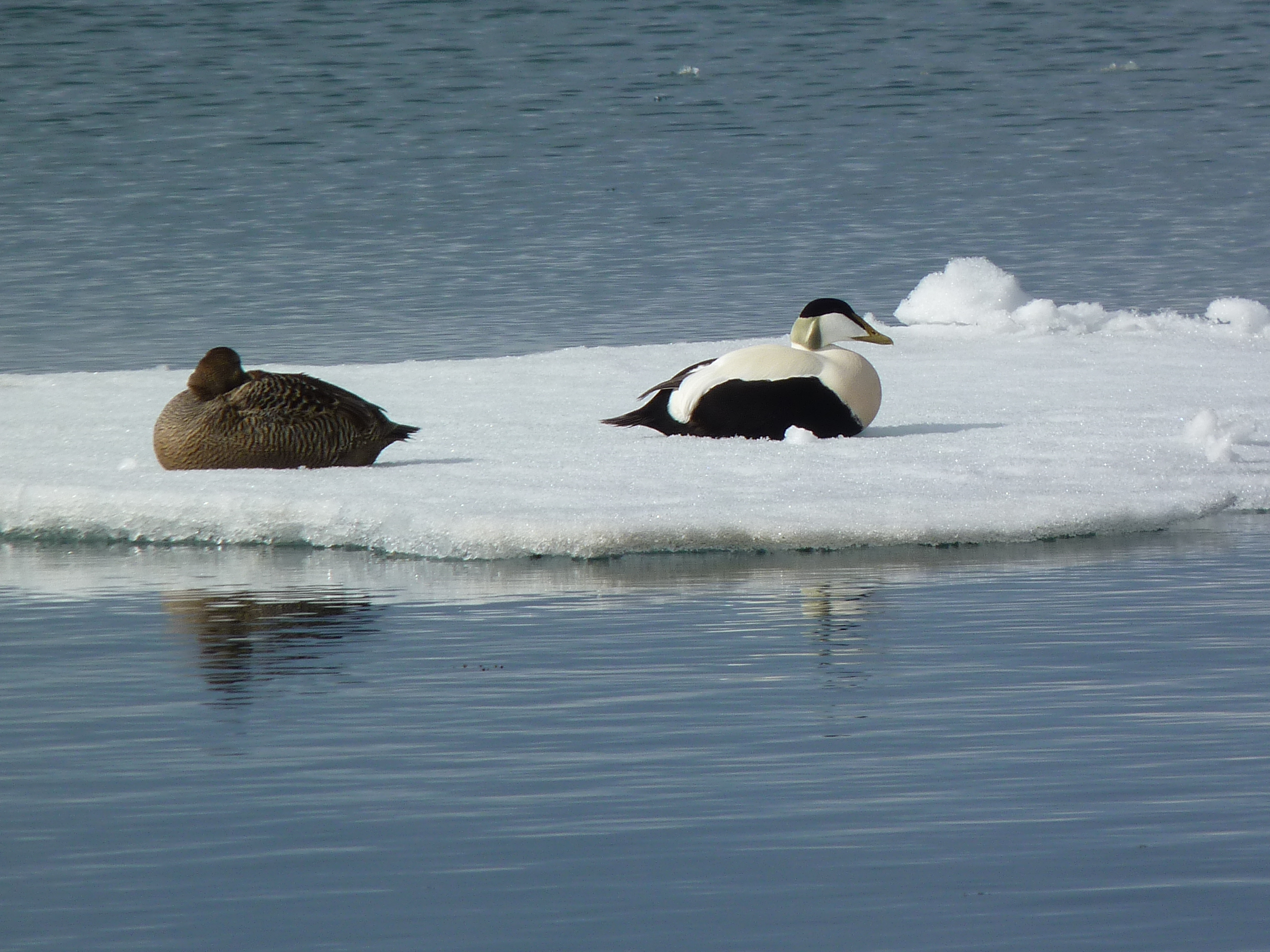
Global climate policy – all afloat? (I.Quaile)
Alas, there have not been many others following the Costa Rican path.
“They have a front-row seat to the havoc climate change is already causing. No wonder they’re moved to action” Katie Quirk wrote in an article for Slate last year. If it is catastrophic impacts that fuel climate action, we may not have all that long to wait.
Now we have had several years of record global temperatures and Figueres says the heat is threatening “everything from Australia’s Great Barrier Reef to ice in Antarctica”.
And “the Arctic has been rendered undrillable,”she told Reuters.
Paradoxically, the easier access to our icy north becomes, the more difficult it becomes to justify commercial activities up there from the point of view of stabilizing the world’s climate.
Yet there are still governments and companies who think it worth drilling in the Arctic. President Trump’s administration is even considering drilling in part of the Arctic National Wildlife Refuge.
Figueres says global emissions should peak by 2020 – a target now highly unlikely to be reached in that short a time.
At the same time, searching for oil and gas in the Arctic would “take years to develop any finds”, she says, suggesting the money would be put to a better use developing renewable energy.
“The stakes are visibly higher than they were just a few years ago,” she said in the recent Reuters interview. Indeed, and they are rising all the time.
Time to cruise the Northwest Passage?
When I came across a story about a sold-out cruise through the North-West Passage planned for this summer on a giant liner carrying around a thousand passengers, I couldn’t help remembering a workshop I attended in Tromsö in 2014, organized by the Washington-based Arctic Institute, Center for Circumpolar Security Studies, within the framework of Arctic Frontiers. I wrote a story afterwards entitled “Are we prepared for a catastrophe in the Arctic?”. The answer I got from the experts was definitely a “no”.
One scenario the experts had worked through made a particularly strong impression on me. It envisaged a cruise ship hitting an iceberg off the coast of Greenland. It was not a happy picture. More people on the ship than in the communities on land, not enough helicopters, not enough accommodation, too little medical capacity, in short a lack of infrastructure to cope, all round.
“A whole new dimension”
With the “Crystal Serenity” set to head through the Northwest Passage this August, I decided it was time to call up Malte Humpert, Director of the Arctic Institute, to get his view on the safety aspects of this – and the current state of shipping activities in the Arctic. He said this was a whole new dimension, with almost 2000 people, including passengers and around 600 crew:
“There’s varying challenges, ranging from ice flows to uncharted depths to unpredictable waters, and so the range of risk is pretty high. Of course one can take precautions like ice pilots, having rescue equipment, icebreakers on standby, but you’re still in a very remote area with very small populations, very limited capacity. So the larger these vessels get, the larger the rescue effort would be required to get people safely to land”, Humpert told me.
Just a few years ago, the Costa Concordia disaster made it clear to a lot of people that modern cruise ship tourism has a lot more risks than we might have thought. So what if something like that took place in the remote regions around Spitzbergen or Greenland, where cruise tourism has been increasing, or even in the Northwest Passage? Humpert describes that as “a very horrifying scenario to think about.”
The Arctic is not the Med
“The Costa Concordia was – half a mile or a mile offshore in the Mediterranean, one of the most frequented cruise ship lanes in the world, and even there it took over 50 lives. In the Arctic, if you’re looking at a ship with 1800 people, first of all you’re not in the Mediterranean where waters are rather temperate, and where you have calm seas most of the time. In the Arctic most likely if something goes wrong it’s not going to go wrong on a nice sunny day with 5 degrees Centigrade, it’s probably going to go wrong in really harsh conditions, and suddenly you have a ship with 1500 to 1800 people, most of the people probably elderly, in frigid waters. The largest communities are probably smaller than the amount of people on the vessel itself and even if you have a helicopter or two on standby, how long is it going to take to get those people off the ship?”
Humpert also mentioned an incident involving the “Clipper Adventurer”, which ran aground in the Canadian Arctic on an uncharted rock in 2010. Fortunately, it happened in shallow water, just about three and a half meters deep, Humpert says. “They had the fortunate circumstances that they had time to get people into rubber dinghies and get them to shore. But of course if you’re looking at 1500 to 1800 people, that’s a whole different dimension”, he stressed again.
Of course certain precautions can be taken.
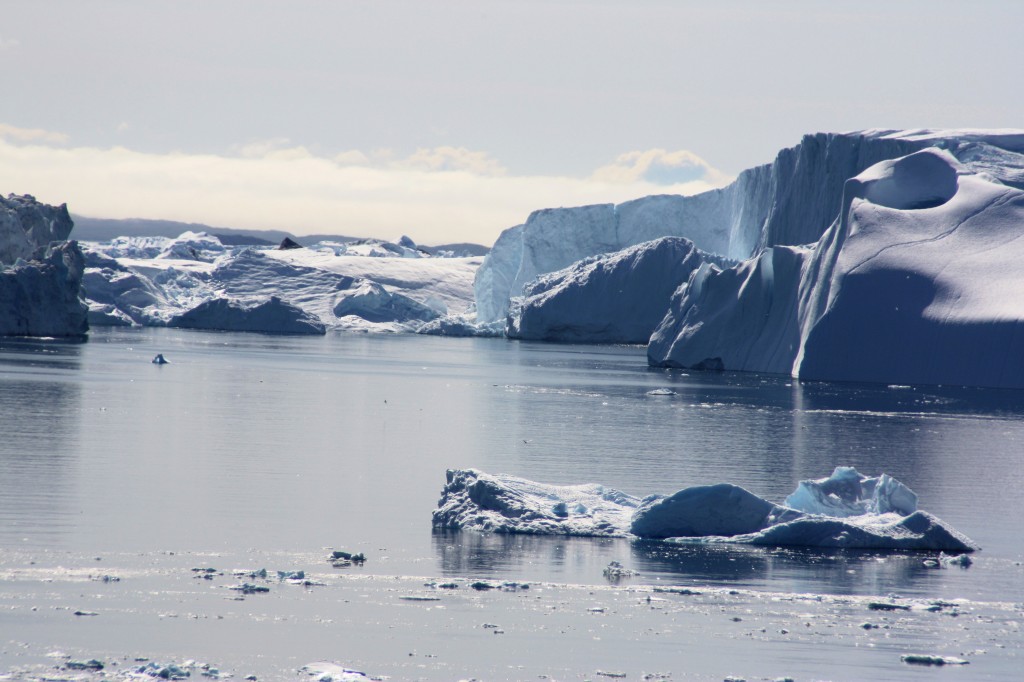
Cruising between the icebergs on Greenland’s west coast is a popular tourist attraction (I. Quaile, Ilulissat )
“The Danish coastguard along the west coast of Greenland requires cruise ships that go into Disko Bay and Iceberg Ally on the west side to go in pairs. They have to stay within a certain distance of each other when they go into ice-infested waters , just so there is actually a second floating platform that could take aboard these people if one of the cruise ships were to get into trouble. That in my opinion is one of the largest risks. Yes, you can have all the equipment on standby, you can have ice pilots along, but if something does go wrong and you need to get people off the ship quickly – the quickly part is the problem. And where do you put those people?”
Too big to sink?
With all of this, the problem is the huge size of today’s cruise ships. The thought of almost a thousand people converging on a small, remote Arctic community is one I personally find most unattractive. (That is an example of the British art of understatement.) Humpert stresses even when cruise ships go into regular ports, they have to take people ashore in groups.
With this first trip by a giant liner through the Northwest Passage, he reckons all possible precautions will be taken. But if the voyage works well, the danger is that more and more companies will want to follow suit and send large vessels up there.
“Then suddenly we might have lower budget cruises that don’t take the necessary precautions. With higher frequencies of these voyages, the risks definitely go up.”
After this record warm winter and the huge decline in the amount of sea ice in some regions of the Arctic, my feeling is that people can be lulled into a false sense of security, when they hear about a “warming Arctic”. Malte Humpert agrees.
“Whenever people read in the headlines “ice-free Arctic,” it kind of makes it sound like the Arctic is now your local pool or the Mediterranean, suddenly. The Arctic is still a very harsh environment. Just because the ice is melting during the very short summer season and because of this “warming” – that does not mean its suddenly warm – it’s still a very harsh environment and you forget that small mistakes in the Arctic can rather quickly become very deadly mistakes.”
The highest risk, according to the Arctic expert, is that people forget that a cruise in the Arctic can be a dangerous endeavor. “If everything goes well it would probably be the experience of a lifetime, but small errors can quickly become insurmountable in the Arctic”.
Northwest Passage – international waters
When it comes to regulating shipping in the region, Humpert notes that the Northwest Passage is considered an international strait. That means as long as commercial vessels or cruise ships have international certificates of transit, they are allowed to go through.
“Canada can require that vessels abide by environmental regulations, that they take on board ice pilots, the coast guard can prescribe certain routes. If they see that some channels along the Northwest Passage have too much ice, they can require cruise ship to go a different route. But in general, the Northwest Passage is accessible to anyone. And of course the more activity you have, the harder it becomes to ensure that environmental regulations are abided by, that accidental spills or other mishaps don’t occur in the Arctic, and so its a very careful balance between allowing these first business ventures to head up into the Arctic and at the same time fulfilling these pledges we have seen over the last five to ten years that the Arctic is a pristine environment and should be protected”.
I am deeply concerned that climate change is opening the Arctic so fast that it’s hard for environmental protection and safety measures to keep pace. Humpert says it’s always difficult for policymakers to keep up in cases like this. But he is full of praise for the oil spill and search and rescue agreements drawn up by the Arctic Council. The question is whether the assets and infrastructure are there to implement them. Icebreakers???
The cheap fuel paradox
Aside from the issue of cruise ship traffic, international freight companies have used the Northern Sea Route along the Russian coast in recent years to transport gas and commodities, reducing the distance between Shanghai and Hamburg by around 6,400 kilometers compared with the Suez Canal Route. .
Humpert’s Arctic Institute recently conducted a study on the feasibility of the Northern Sea Route for different types of shipping, compared with the other route.
The study includes a calculator, in the form of an online tool, and allows for variables such as vessel size, ice class, distance, ice extent, fuel price, average speed, NSR fees, etc., to give a very detailed calculation of what type of transport would be economically feasible. The tool illustrates how cost curves change depending on the amount of ice, size of the vessel and the price of fuel. The calculator even takes into account ship hull designs to calculate costs.
“In 2012 and in 2013 we saw quite a bit of traffic going through the Northern Sea Route, about 70 ships in 2013 was the peak. That’s still very small compared what goes through the Suez Canal, where we see around 16, 17, 18,000 ships passing through a year. What our study in cooperation with the Copenhagen Business School Maritime Center shows, is that the key factor is fuel prices. So if fuel prices are very low then those shortcuts don’t really pay dividend for shipping companies”, Humpert told me.
I was quite shocked by one fact he drew my attention to. At the moment oil prices are so low that a lot of shipping companies are choosing not to go through the Suez Canal any more. Instead, they take the long way round, choosing to go around the Cape of Good Hope at the southern tip of Africa. Humpert says this adds 3500 miles to their journey and about 10 or 11 days of sailing time. It seems that they still save about 350,000 dollars on average by not paying transit fees for the Suez Canal.
The environmental and climate costs of the extra fuel burned clearly just do not feature!
This also has implications for the Northern Sea Route, says Humpert.
“You need special insurance, you need ice breaker escorts which are quite costly, you need to pay transit fees to the Northern Sea Route Administration. So it’s an interesting calculation”. The experts come to the conclusion that sometimes, for some shipping operators, at some time of year or in a given year when certain conditions are right, it may be economically feasible to go through the Northern Sea Route. At other times it may be more prudent or more economical to use the Suez Canal.
“Currently, the Northern Sea Route is a very specialized shipping environment. Very few operators have looked at it, and those that tried in 2013 haven’t really come back. Last year we only saw 19 ships go through the Northern Sea Route and very, very limited cargo volumes. It will be interesting to see what happens this year as we have a new record ice low in January and February. It could be that we are heading for that kind of ice-free season where two or three months of the year you really have a practically ice-free Northern Sea Route, which would start to alter the economic calculations. But the fuel price would certainly have to be higher”.
So we seem to be caught in some kind of a vicious circle. If the fuel price stays low, the Arctic will be saved for some time from increased freight traffic along the Northern Sea Route. But the price is increased emissions from the burning of all that extra cheap fuel. And that, as we know, heats up the climate further and melts ice, making it easier for shipping of whatever form to head into Arctic waters. If the fuel price goes up, companies will be keener to make use of the shorter Northern Sea Route. Unless there is some kind of miraculous, unexpected planetary cool-down somewhere in the pipeline, I can only conclude that increased shipping and the risk of a potentially catastrophic oil-spill or other incident in Arctic waters are only a matter of time.
Arctic investment: still a hot prospect?
As I mentioned in the last post, I talked to various people about the current state of interest in the Arctic, in connection with the ArcticNet conference on “Arctic Change” in Ottawa last week. I would like to share some of the insights I gained with you here on the Ice Blog. With a lot of concerned people still suffering from a kind of mental hangover after the two weeks of UN climate negotiations in Lima, let me also direct you to a commentary I wrote for DW: Lima: a disappointment, but not a surprise. If you expected any action at the meeting which might help stop the Arctic warming, you will have been highly disappointed. If, like me, you think the transition to renewables and emissions reductions we need have to happen outside of and alongside that process, all day and every day, your expectations will not have been so high.
But back to the Arctic itself. With Canada coming to the end of its spell at the helm of the Arctic Council and preparing to hand over the rotating presidency to the USA at the end of the year, the annual conference organized by the research network ArcticNet was bound to attract a lot of interest. More than 1200 leading international Arctic researchers, indigenous leaders, policy makers, NGOs and business people attended the Ottawa gathering to discuss the pressing issues facing the warming Arctic.
Hugues Lantuit from Germany’s Alfred Wegener Institute is a member of the steering committee. He’s an expert on permafrost and coastal erosion. He told me in an interview that the region had to prepare for greater impacts ,with the latest IPCC report projecting the Arctic would continue to warm at a rate faster than any place on earth. While the retreat of sea ice allows easier access for shipping and more scope for commercial activities, Lantuit is concerned about the thawing of permafrost, a key topic at the Ottawa gathering:
“An extensive part of the circumpolar north is covered with permafrost, and it’s currently warming at a fast pace. A lot of cities are built on permafrost, and the layer that is thawing in the summer is expanding and getting deeper and deeper, which threatens infrastructure.”
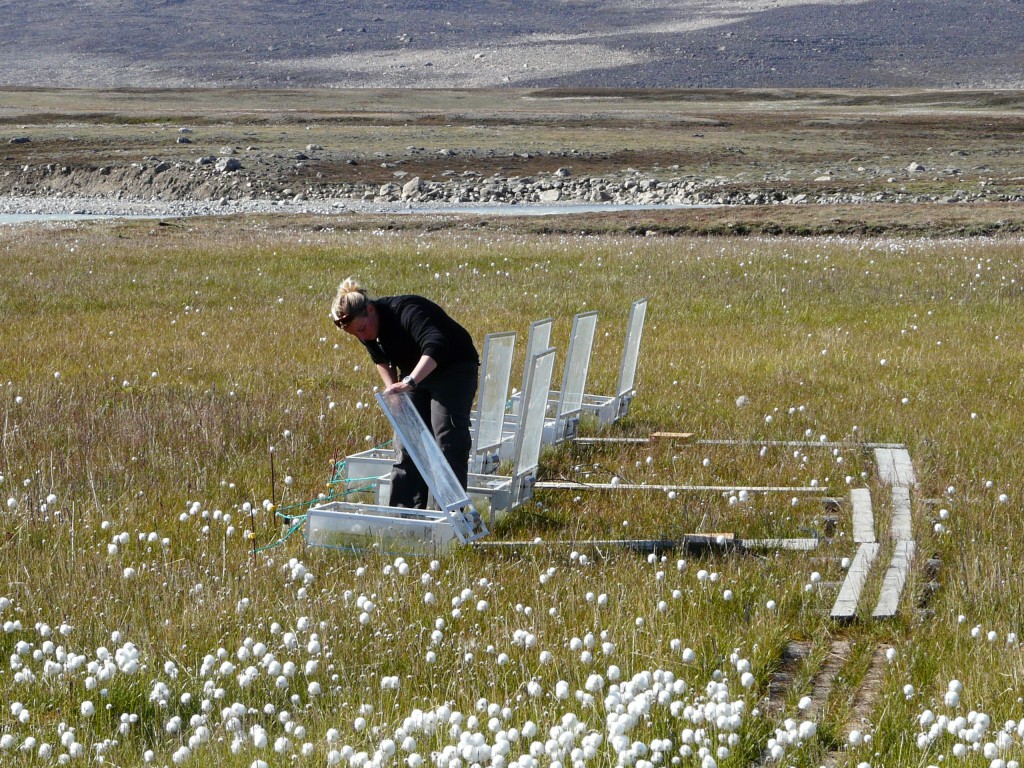
Scientists at measuring stations like the one I viisted at Zackenberg, Greenland, measure the amount of greenhouse gases emitted by melting permafrost. (I.Quaile)
Northern communities worried
Residents of northern communities are concerned about the impact of melting permafrost on railways, landing strips and buildings. Lantuit and his colleagues have created an integrated data base for permafrost temperature, with support from the EU. At the Ottawa meeting, he and his colleagues worked on identifying priorities for research, taking into account the needs of communities and stakeholders in the Arctic.
Another key issue on the Ottawa agenda was coastal erosion. Sea ice acts as a protective barrier to the coast, preventing waves from battering the shore and speeding up the thaw of permafrost. With decreasing sea ice in the summer, scientists expect more storms will impact on the coasts of the Arctic. “In some locations, especially in Alaska, we see much greater erosion than there was before”, says Lantuit. This creates a lot of issues: “There is oil and gas infrastructure on the coast, villages, people, also freshwater habitats for migrating caribou, so the coast has a tremendous social and ecological value in the Arctic, and coastal erosion is obviously a threat to settlements and to the features of this social and economical presence in the Arctic.”
Bad news for furred and feathered friends
Amongst the participants at the conference was George Divoky, an ornithologist who has spent every summer of the past 45 years on Cooper Island, off the coast of Barrow, in Arctic Alaska. Divoky monitors a colony of black guillemots that nest on the island in summer. His bird-watching project turned into a climate change observation project as he witnessed major changes in the last four decades:
“Warming first aided the guillemots (1970s and 1980) as the summer snow-free period increased. The size of the breeding colony increased during the initial stages of warming. Continued warming (1990s to present) caused the sea ice to rapidly retreat in July and August when guillemots are feeding nestlings, and the loss of ice reduced the amount and quality of prey resulting in widespread starvation of nestlings.”
The 2014 breeding season on Cooper Island had the lowest number of breeding pairs of Black Guillemots on the island in the last 20 years, Divoky says. Reduced sea ice is increasingly forcing polar bears to seek refuge on the island, eating large numbers of nestlings. Polar bears were rare visitors to the island until 2002.
The Arctic and the global climate
Divoky went to Ottawa to fit his research and experience into the wider context of climate impacts in the Arctic. Researching climate change and its effects are important but of little practical use if the research does not inform government officials and result in policies that address the causes of climate change, Divoky argues.
I asked Hugues Lantuit whether he thought the UN climate conference in Peru could achieve anything that would halt the warming of the Arctic. He said reducing emissions and reducing temperature were the only way to reduce the thaw of permafrost. But he is quite clear about the fact that there is no mitigation strategy in terms of permafrost directly. “You would have to put a blanket over the entire permafrost in the northern hemisphere. This is not possible.”
At the same time, he stressed the key role of the Arctic with regard to the whole world climate: “Permafrost contains a lot of what we call organic carbon, and that is stored in the upper part. And if that warms, the carbon is made available to microorganisms that convert it back to carbon dioxide and methane. And we estimate right now that there is twice as much organic carbon in permafrost as there is in the atmosphere”.
So far, the international community has not been able to take measures to break that vicious circle.
What happened to the Arctic gold rush?
Communities who live and companies that work in the Arctic have to focus on adaptation to the rapid change, says Lantuit. In his eyes, economic activity is increasing, posing new challenges for infrastructure and the environment.
Malte Humpert, the Executive Director of the Arctic Institute, a non-profit think tank based in Washington DC has a different view on the matter. He says while attendance at Arctic conferences and interest in the Arctic is still high, commercial activity has actually been cooling off. “We are seeing a slow-down of investment. Up to this point there has been a lot of studying, a lot of interest being voiced, with representatives from China or South Korea, Japan, Singapore or other actors, arriving at conferences, speaking about grand plans. But up to this point a lot of the talk has been just that.” A lot of activity has been put on hold, says Humpert. He says the “gold rush mentality we saw a few years ago” has weakened. “There was a lot of talk about Arctic shipping initially, then we had oil and gas activity in 2012, north of Alaska, then we had the discussion about minerals in Greenland. The question is now, with the oil price being down below 70$ a barrel, some political uncertainties over the Ukraine, involving the EU and Russia, how will that affect Arctic development?”
Humpert stresses the Arctic does not exist in a vacuum, but has to be seen within the global context. Sanctions on Russia because of the Ukraine crisis have created economic problems for Moscow and limited access to technology it might need for its Arctic activities. “Maybe Arctic development has been oversold and overplayed and will be more of a niche operators’ investment. One could definitely question if there will be this global push into the Arctic.”
Arctic development on ice
Humpert is skeptical that any major development will take place before 2030. He says developing the infrastructure in terms of ports and communications in the remote Arctic region would require billions of dollars of investment, and would have to be a very long-term proposition. It will also depend to a large extent on exactly how climate change affects ice conditions in the Arctic. Climate change can make the climatic conditions in the Arctic more variable. This means that for a temporary period, there might even be more ice, which would block transport routes.
The Arctic Institute says there has actually been a slow down this year in terms of navigation on the northern sea route (NSR) in particular: “The season just closed about a week ago. Last year we had 1.35 million tonnes of cargo being transported along the NSR, this year we had less than 700,000 tonnes, so an almost 50% decrease, just because there was more ice in the way”, says Humpert.
Whether slower development is good news or bad depends on your perspective. The lull in Arctic activity could pre-empt environmental degradation or destruction, says Humpert, and leave scope to consider development of the Arctic in what he calls a 21st century way. Instead of “old-school” thinking about extracting minerals, oil and gas and increasing shipping, there could be a focus on bringing modern, high-speed communications, fiber optics and thinking about renewables, such as wave energy. This would benefit the small populations in the Arctic, the expert argues.
But from the viewpoint of a country like Russia, he adds, where 40 percent of your exports are generated above the Arctic circle, in terms of hydrocarbon resources, the slowdown in Arctic development because of the drop in oil prices and political tensions over Ukraine is very worrying.
So while these developments seem to have brought the Arctic a breathing space, ultimately, the commercialization of the region could be just a matter of time. Ottawa conference organizer Lantuit argues that there has always been activity in the high North. The priority now, he says, must be to ensure international cooperation and additional investment in protecting the environment and maintaining safety in a region where rapid change seems to have become the status quo.
Norway focuses on “Humans in the Arctic”
With the Annual “Arctic Frontiers” conference in Norway’s “Arctic capital” Tromsö looming large on the horizon from January 19th to 24th, I was interested to see that the conference theme of “Humans in the Arctic” was the subject of an event held by the North Norway European Office in collaboration with The Arctic Institute and Maritimt Forum Nord.
Those of us who are too far away to be able to drop in to seminars like this ahead of the big event can thank Kathrin Keil and Andreas Raspotnik from the Arctic Institute for keeping us up to date with a short report summarizing the event.
It is not surprising to see an increase in the number of conferences and seminars on Arctic development, given the climate-change related changes to the region which feature here on the Ice Blog. I have the sense that there is considerable competition between different Arctic players on all levels to become the focus of development activities.
In the event report, Raspotnik and Keil refer to the “Tromsö High North Cluster”. According to Anne Husebekk, the rector of the University of Tromso (UiT), as quoted in the paper, “The Tromsö High North Cluster can play a crucial role in providing the necessary knowledge for sustainable development in the Norwegian Arctic”. On my visits to Tromsö, I certainly had the feeling that people were working hard at this.
In my last blog post I mentioned the campaign underway to establish an EU Arctic Info Centre in Rovaniemi in Finland.
Understandably, all the Arctic states are keen to have a large chunk of the cake and stress their own expertise and infrastructure. But in an area like the Arctic, international cooperation is clearly essential.
Oil and gas drilling and increased shipping are usually the first issues that come to mind in connection with Arctic development, with all the safety, logistic and environmental challenges they bring with them. But the High North is also a key area for fishing, an activity which may not exactly benefit from extended industrial or commercial activity, not to mention the pressures from climate change. One point that attracted my attention in the conference report was a presentation by Trygve Myrvang, Managing Director of the Norwegian Fishermens Sales Organization, looking at the sustainability of fish stocks in the Norwegian North and factors affecting it. “Myrvang underlined the necessity of cooperation between the fishery and energy industry in the High North, both interested in the same offshore areas, say Raspotnik and Keil.” Indeed. Interesting times ahead. And plenty of scope for discussion at Arctic Frontiers. The Arctic Institute will also be holding a side event on “infrastructure-related challenges in the Arctic”. There is certainly no shortage of those. I hope I can be there to join the forum.




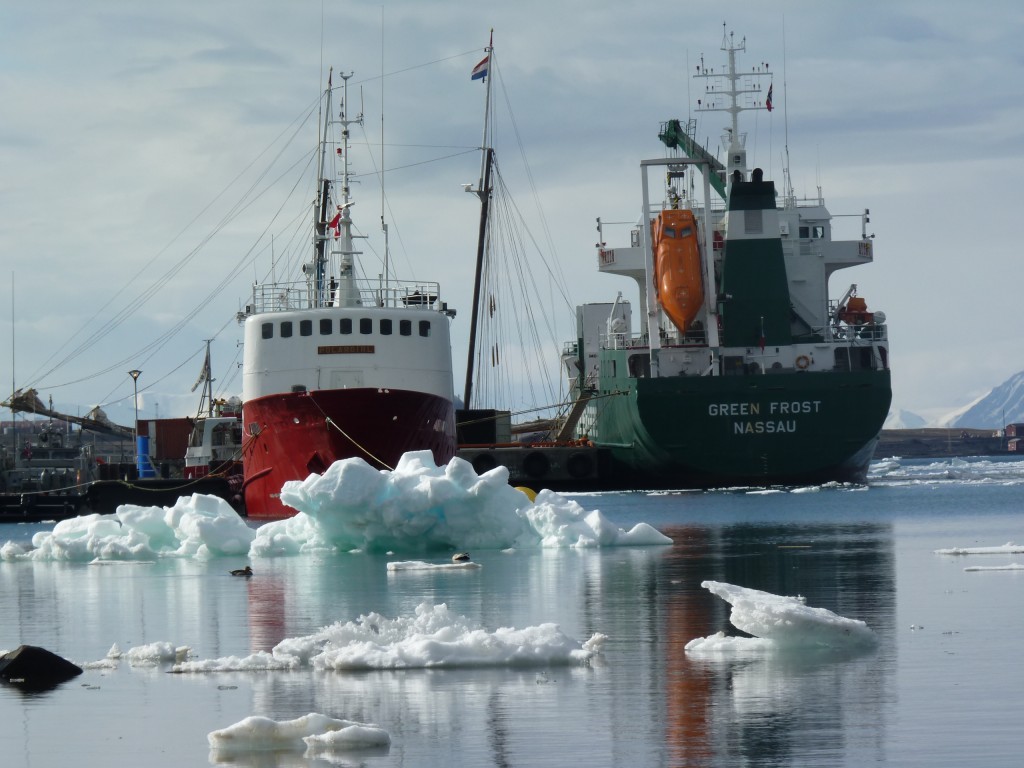

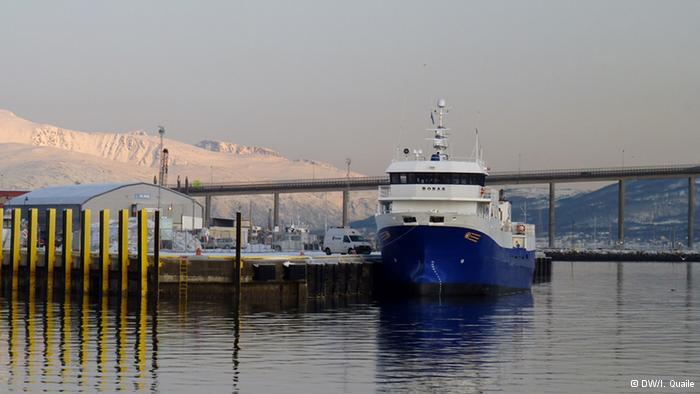
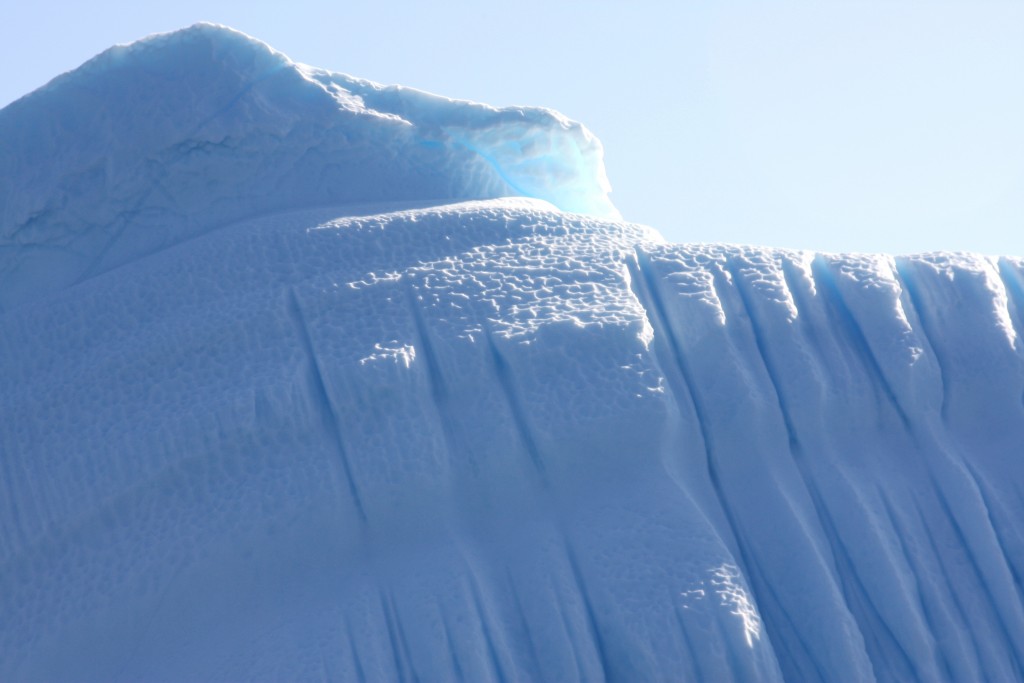
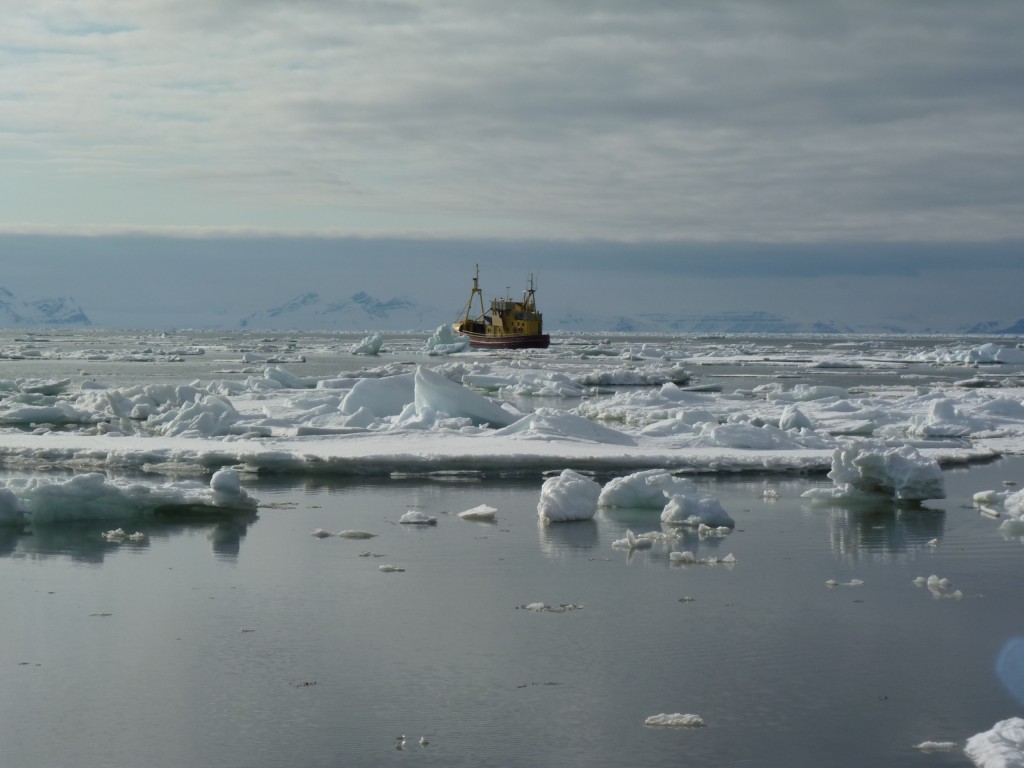
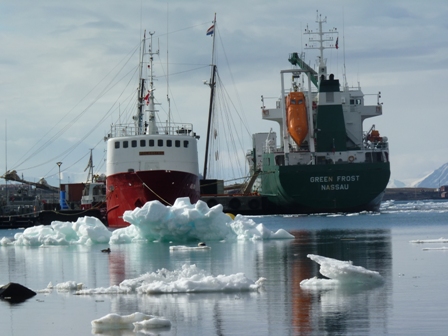

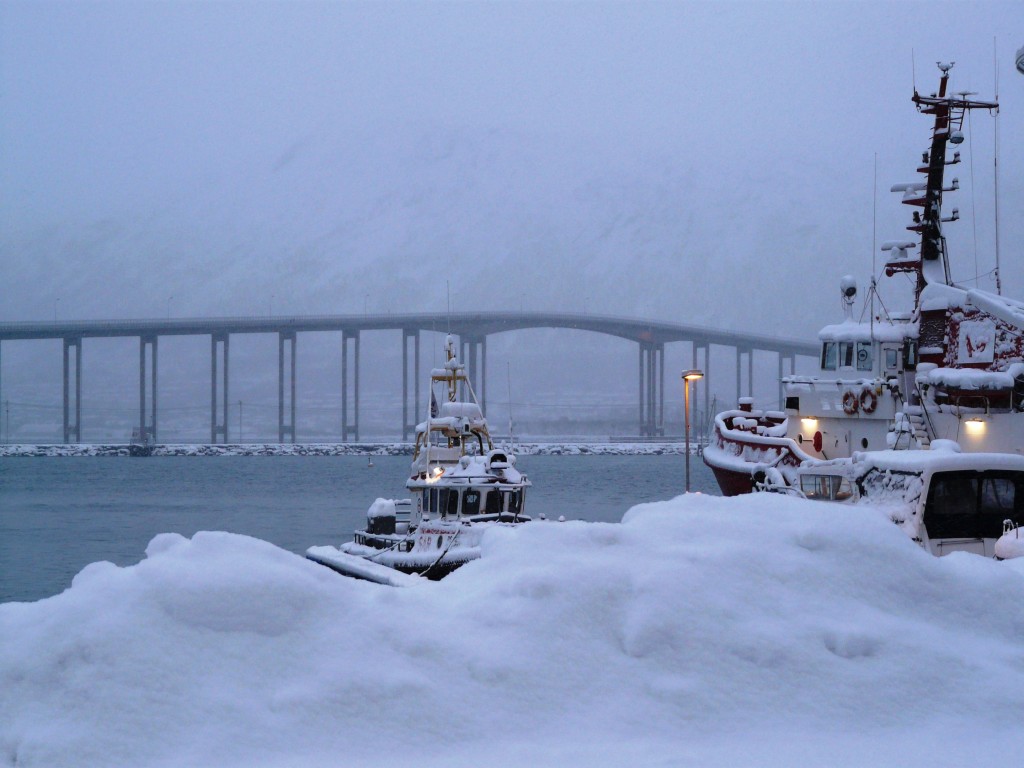












Feedback